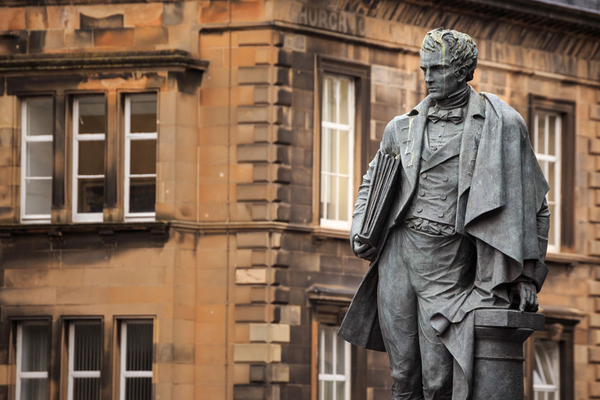Was Chaucer a rapist? New research suggests he was not

For nearly 150 years, a cloud has hung over the reputation of Geoffrey Chaucer, the author of “The Canterbury Tales,” long seen as the founder of the English literary canon. A court document discovered in 1873 suggested that around 1380, Chaucer had been charged with raping Cecily Chaumpaigne, the daughter of a London baker. In the document, Chaumpaigne released Chaucer from “all manner of actions related to my raptus”— a word commonly translated as rape. But this week, two scholars stunned the world of Chaucer studies with previously unknown documents that they say show that the “raptus” document was not in fact related to an accusation of rape against Chaucer at all. The new documents, the two scholars say, establish that the one that surfaced in the 1870s had been misinterpreted. Instead of stemming from a rape case, they argue, the document had been filed as part of a labor case, in which another man charged Chaumpaigne with leaving his household to work in Chaucer’s before her term of labor was over.
The original Tiger Kings
The last survivors of a lost empire live behind the Mirage, in Las Vegas, out back by the pool. On a good day, Siegfried & Roy’s Secret Garden will draw more than 1,000 visitors, the $25 adult admission fee justified mostly by the palm shade and tranquility it offers relative to the mania outside its walls. There are also long summer stretches when it’s 100 degrees and things get a little grim. During a recent visit, only a few families strolled through, surveying the five sleeping animals on display: three tigers, a lion, and a leopard. The Secret Garden ostensibly operates as an educational facility. “Look, a lion,” one young father said to his son, while pointing at a tiger.

How to store data for a thousand years
At her home in Paris, Dina Zielinski, a senior scientist in human genomics at the French National Institute of Health and Medical Research, holds up a tiny vial. At the bottom is a mostly clear, light film – this is DNA. But this DNA is special. It does not store the code from a human genome, nor does it come from any animal or virus. Instead, it stores a digital representation of a museum. "That will last easily tens of years, maybe hundreds," says Zielinski. Research into how we could store digital data inside strands of DNA has exploded over the past decade, in the wake of efforts to sequence the human genome, synthesise DNA and develop gene therapies. Scientists have already encoded films, books and computer operating systems into DNA. Netflix has even used it to store an episode of its 2020 thriller series Biohackers.

Innovations in juggling
How many new ways can there possibly be of throwing a bunch of balls up in the air and catching them? After all, people have been juggling for thousands of years. There’s even an ancient Egyptian tomb that includes a wall painting of what sure looks like juggling. So as a modern juggling performer, how do you keep your routine fresh? Adam Dipert is a scientist and mathematician with a PhD in physics and a special interest in zero gravity movement. He is also a circus performer. a juggler, a fire spinner, and a stilt acrobat. Now he has found a way to combine his two passions as the Space Juggler, having developed a juggling routine designed for zero gravity.

Human brain cells transplanted into baby rats’ brains grow and form connections
In a study published in the journal Nature, lab-grown clumps of human brain cells were transplanted into the brains of newborn rats. They grew and integrated with the rodents’ own neural circuits, eventually making up around one-sixth of their brains. These animals could be used to learn more about human neuropsychiatric disorders, say the researchers behind the work. “It’s an important step forward in progress into [understanding and treating] brain diseases,” says Julian Savulescu, a bioethicist at the National University of Singapore, who was not involved in the study. But the development also raises ethical questions, he says, particularly surrounding what it means to “humanize” animals.

When cities treated cars as dangerous intruders
Today it is a commonplace idea that the automobile represents freedom. But to many Americans in the 1920s, the car and its driver were tyrants that deprived others of their freedom. Before other auto promoters, Charles Hayes saw that industry leaders had to reshape the traffic safety debate. As president of the Chicago Motor Club, Hayes warned his friends that bad publicity over traffic casualties could soon lead to “legislation that will hedge the operation of automobiles with almost unbearable restrictions.” The solution was to persuade city people that “the streets are made for vehicles to run upon.”

Biquette the goat – an absolute legend
— WholesomeMemes (@WholesomeMeme) October 16, 2022



